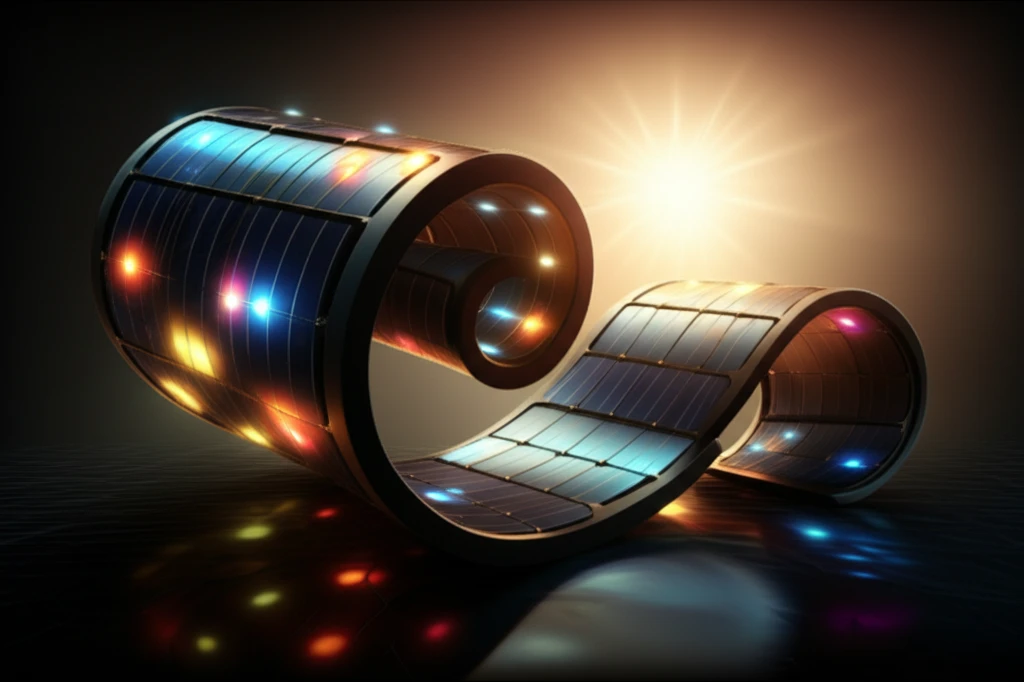
Quantum Dot Solar Cells: Are Flexible Electrodes the Future?
"New research explores how flexible electrodes made from copper sulfide and carbon nanotubes can significantly improve the efficiency of quantum dot solar cells."
Quantum dot-sensitized solar cells (QDSCs) are gaining traction as a promising alternative in renewable energy. Unlike traditional silicon-based solar cells, QDSCs offer advantages such as simpler manufacturing processes and the potential for higher power conversion efficiency at a lower cost. This makes them an attractive area of research for scientists looking to make solar energy more accessible and efficient.
A key component of QDSCs, like all solar cells, is the electrode. The counter electrode (CE) is responsible for facilitating the reduction of redox couples in the electrolyte, a crucial step in the energy conversion process. Traditionally, materials like metal sulfides (PbS, Cu2S, etc.) have been used, but their moderate electrical conductivity limits overall performance. Researchers are exploring new materials and methods to enhance the CE's efficiency and durability.
Recent research focuses on using a combination of copper sulfide (CuxS) and carbon nanotubes (CNTs) to create flexible counter electrodes. This innovative approach aims to leverage the high catalytic activity of CuxS and the excellent conductivity of CNTs, while also providing the flexibility needed for modern solar cell applications. The results indicate a significant improvement in the performance of QDSCs using these novel electrodes.
How Do Flexible CuxS-CNT Electrodes Improve Solar Cell Performance?

The study, published in Materials Research Express, details the creation and testing of flexible CuxS-CNT/Ti counter electrodes. These electrodes are fabricated using a technique called successive ionic layer adsorption and reaction (SILAR), which allows for precise deposition of CuxS nanoparticles onto a carbon nanotube framework supported by a titanium mesh.
- Electrocatalytic Activity: The combination of CuxS and CNTs significantly boosts the electrocatalytic activity compared to CNTs alone.
- Efficiency Boost: QDSCs assembled with these flexible CEs achieved a power conversion efficiency of approximately 6.20%, a substantial 48.7% increase over those using only CNT/Ti electrodes.
- Durability: The flexible electrodes demonstrate excellent bending properties, maintaining their performance even after repeated bending cycles.
The Future of Solar: Flexible, Efficient, and Affordable?
This research highlights the potential of flexible CuxS-CNT electrodes to enhance the performance and reduce the cost of quantum dot solar cells. By combining readily available materials with innovative fabrication techniques, scientists are paving the way for more efficient and affordable solar energy solutions.
The improved power conversion efficiency and durability of these electrodes make them a promising candidate for next-generation solar cell technology. Further research could focus on optimizing the SILAR process, exploring alternative materials, and scaling up production to meet the growing demand for renewable energy.
As the world transitions towards a more sustainable future, innovations like flexible quantum dot solar cells will play a crucial role in harnessing the power of the sun and providing clean, reliable energy for all.
